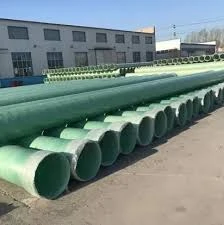
-
 Afrikaans
Afrikaans -
 Albanian
Albanian -
 Amharic
Amharic -
 Arabic
Arabic -
 Armenian
Armenian -
 Azerbaijani
Azerbaijani -
 Basque
Basque -
 Belarusian
Belarusian -
 Bengali
Bengali -
 Bosnian
Bosnian -
 Bulgarian
Bulgarian -
 Catalan
Catalan -
 Cebuano
Cebuano -
 China
China -
 China (Taiwan)
China (Taiwan) -
 Corsican
Corsican -
 Croatian
Croatian -
 Czech
Czech -
 Danish
Danish -
 Dutch
Dutch -
 English
English -
 Esperanto
Esperanto -
 Estonian
Estonian -
 Finnish
Finnish -
 French
French -
 Frisian
Frisian -
 Galician
Galician -
 Georgian
Georgian -
 German
German -
 Greek
Greek -
 Gujarati
Gujarati -
 Haitian Creole
Haitian Creole -
 hausa
hausa -
 hawaiian
hawaiian -
 Hebrew
Hebrew -
 Hindi
Hindi -
 Miao
Miao -
 Hungarian
Hungarian -
 Icelandic
Icelandic -
 igbo
igbo -
 Indonesian
Indonesian -
 irish
irish -
 Italian
Italian -
 Japanese
Japanese -
 Javanese
Javanese -
 Kannada
Kannada -
 kazakh
kazakh -
 Khmer
Khmer -
 Rwandese
Rwandese -
 Korean
Korean -
 Kurdish
Kurdish -
 Kyrgyz
Kyrgyz -
 Lao
Lao -
 Latin
Latin -
 Latvian
Latvian -
 Lithuanian
Lithuanian -
 Luxembourgish
Luxembourgish -
 Macedonian
Macedonian -
 Malgashi
Malgashi -
 Malay
Malay -
 Malayalam
Malayalam -
 Maltese
Maltese -
 Maori
Maori -
 Marathi
Marathi -
 Mongolian
Mongolian -
 Myanmar
Myanmar -
 Nepali
Nepali -
 Norwegian
Norwegian -
 Norwegian
Norwegian -
 Occitan
Occitan -
 Pashto
Pashto -
 Persian
Persian -
 Polish
Polish -
 Portuguese
Portuguese -
 Punjabi
Punjabi -
 Romanian
Romanian -
 Russian
Russian -
 Samoan
Samoan -
 Scottish Gaelic
Scottish Gaelic -
 Serbian
Serbian -
 Sesotho
Sesotho -
 Shona
Shona -
 Sindhi
Sindhi -
 Sinhala
Sinhala -
 Slovak
Slovak -
 Slovenian
Slovenian -
 Somali
Somali -
 Spanish
Spanish -
 Sundanese
Sundanese -
 Swahili
Swahili -
 Swedish
Swedish -
 Tagalog
Tagalog -
 Tajik
Tajik -
 Tamil
Tamil -
 Tatar
Tatar -
 Telugu
Telugu -
 Thai
Thai -
 Turkish
Turkish -
 Turkmen
Turkmen -
 Ukrainian
Ukrainian -
 Urdu
Urdu -
 Uighur
Uighur -
 Uzbek
Uzbek -
 Vietnamese
Vietnamese -
 Welsh
Welsh -
 Bantu
Bantu -
 Yiddish
Yiddish -
 Yoruba
Yoruba -
 Zulu
Zulu
Molded Grating Innovations for Enhanced Performance and Versatility in Modern Applications
Molded Grating An Innovative Solution for Modern Applications
Molded grating, also known as molded fiberglass grating or FRP (Fiber Reinforced Polymer) grating, represents a significant advancement in materials designed for industrial, commercial, and architectural applications. This innovative solution offers unmatched advantages over traditional materials, making it an increasingly popular choice across various sectors.
What is Molded Grating?
Molded grating is manufactured through a process that combines resin and glass fibers, which are then molded into panels with a variety of thicknesses and surface configurations. This process produces a lightweight yet robust product that provides high strength, excellent corrosion resistance, and durability, making it suitable for demanding environments.
Key Features and Benefits
1. Corrosion Resistance One of the most crucial advantages of molded grating is its exceptional resistance to corrosive substances. Unlike steel or wood, molded grating does not rust or rot, making it an excellent solution for applications exposed to harsh chemicals or moist environments, such as wastewater treatment plants, chemical processing facilities, and marine applications.
2. Lightweight and Easy to Install Molded grating is significantly lighter than traditional materials like steel, which translates to easier handling and installation. This feature can lead to reduced labor costs and simpler maintenance procedures. Furthermore, its lightweight nature allows for the design of structures that might not support heavier materials.
3. Slip Resistance Safety is paramount in industrial settings. The surface texture of molded grating can be designed for optimal slip resistance, reducing the risk of accidents in wet or oily conditions. This feature is especially important in areas with high foot traffic and the potential for spills.
4. Versatility Molded grating can be customized in terms of size, shape, and color to suit specific applications. Whether it's for flooring, walkways, or platforms, the versatility of molded grating makes it adaptable for various uses, including ventilation grilles, stair treads, and access covers.
5. Aesthetic Appeal Beyond functionality, molded grating offers aesthetic benefits. With a wide range of colors and finishes available, it can be integrated into architectural designs to complement the overall appearance of a building or structure. This versatility allows architects to explore creative designs while ensuring safety and durability.
molded grating

6. Cost-Effectiveness While the initial investment in molded grating may be higher than traditional materials, the long-term savings are significant. Its durability means fewer replacements and reduced maintenance costs over time. Additionally, the lightweight nature of molded grating can lead to savings in transportation and installation expenses.
Applications in Various Industries
Molded grating is utilized in a variety of industries, including
- Chemical Processing The chemical industry frequently employs molded grating in areas exposed to caustic substances due to its ability to withstand harsh chemicals without degradation.
- Water and Wastewater Treatment Its corrosion resistance makes it ideal for water treatment facilities where it can be used for walkways, platforms, and equipment support.
- Food Processing Molded grating meets hygiene standards, making it a suitable option for food and beverage facilities.
- Mining and Oil & Gas The strength and durability of molded grating allow it to perform well in harsh conditions often found in mining and oil extraction environments.
Conclusion
As industries evolve and seek out materials that offer both functionality and cost efficiency, molded grating stands out as a superior choice. Its unique combination of corrosion resistance, lightweight design, slip resistance, and aesthetic versatility makes it an increasingly preferred option in a variety of applications. As we look to the future, it is clear that molded grating will continue to play a crucial role in shaping modern infrastructure, providing solutions that meet both operational needs and safety requirements.









